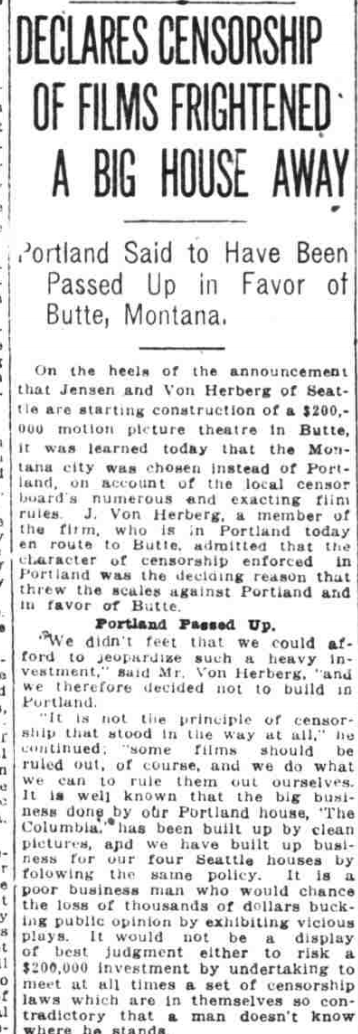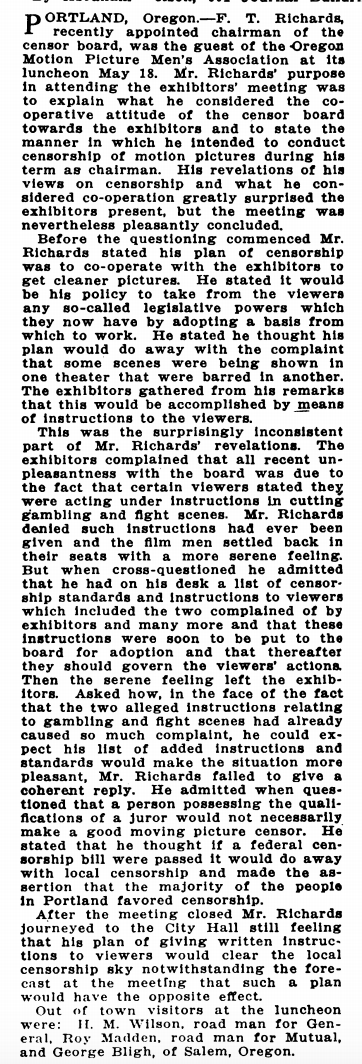As early as 1897, local film censorship boards regulated film exhibition with standards that varied city to city, and because of a lack of enforcement power, even theater to theater. In 1911, Portland debuted a censorship board of its own. The chairman of the board, at least in 1916, was a man by the name of F. T. Richards. Richards took it upon himself to meet with exhibitors and establish standards for what controversial films could or could not be shown because of various forms of explicit content, especially dealing with sex, violence, and other unfavorable acts like gambling. Richards was under the impression that most Portlanders favored censorship, yet many exhibitors protested the restrictions – favoring the use of their own judgment. The extent of motion picture censorship was also worrying to future investors, such as Jensen and Von Herberg, two entertainment businessmen who owned many prosperous theaters in the Northwest. In a 1916 article for the Oregon Daily Journal, Jensen and Von Herberg claimed that “it would not be a display of best judgment either to risk a $200,000 investment by undertaking to meet at all times a set off censorship law which are in themselves so contradictory that a man doesn’t know where he stands.” The article continues to explain that Jensen and Von Herberg would pass on investing in Portland and would instead spend their money erecting a new theater in Butte, Montana. Despite this kind of negative press, the censorship board lasted for nearly fifty years until film censorship was declared unconstitutional in the US after the 1915 Supreme Court case Mutual Film Corporation v. Industrial Commission of Ohio, in which the court determined that motion pictures were commerce and not an art and therefore could not be covered by the First Amendment. Overall, the national trend of local censorship influenced the type of films that were made. Mature content was rarely seen in early cinema because there was no financial incentive to tell such stories on film. Still, some of the more controversial films, like Birth of a Nation (1915), did make it to the big screen, but it is impossible to know how many potential classics never made it to fruition because of early censorship standards.

